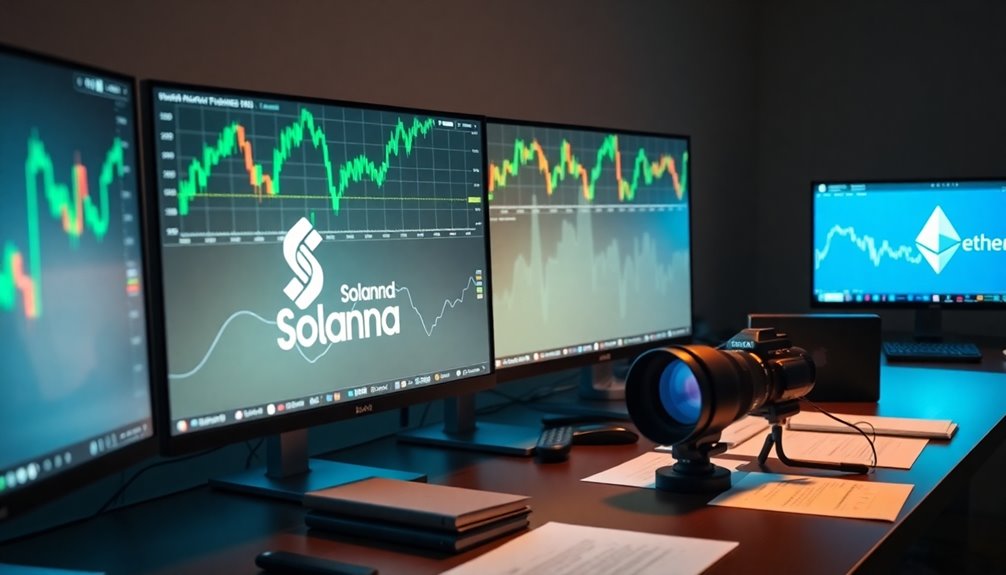You're likely aware of the ongoing rivalry between Solana and Ethereum in the DeFi sector. With Franklin Templeton spotlighting Solana's rising potential, it begs the question: could Solana really outpace Ethereum? As institutional interest grows and Solana's total value locked surges, the landscape is shifting. What does this mean for investors and the future of DeFi? The implications are worth exploring further.

Market Dynamics: Franklin Templeton on Solana vs. Ethereum
As the cryptocurrency landscape evolves, you might've noticed a growing rivalry between Solana and Ethereum, particularly in the DeFi sector. Ethereum has long held its ground as the dominant smart contract platform, thanks to its substantial institutional adoption and a vast developer community. However, Solana is rapidly gaining traction, challenging Ethereum's supremacy with impressive growth in decentralized exchanges (DEX) and faster transaction speeds. This shift is becoming evident as Solana's DEX volumes now surpass those of Ethereum and other EVM-based DEXs combined.
The rivalry between Solana and Ethereum intensifies as Solana's DEX volumes surge, challenging Ethereum's long-standing dominance in DeFi.
The Total Value Locked (TVL) metrics illustrate this dynamic rivalry. As of January 2025, Ethereum leads with a staggering $61.8 billion in TVL compared to Solana's $10.8 billion. Yet, recent market sentiment indicates that investors are increasingly drawn to Solana, primarily due to its scalability and significantly lower transaction fees. This sentiment may be shifting, allowing Solana to capture a larger share of the DeFi market.
Franklin Templeton has noted that Solana's DeFi sector is undervalued, hinting at the potential for substantial price adjustments as recognition of its capabilities grows. Their recent filing for a Solana-based ETF could further legitimize Solana's adoption, suggesting an uptick in interest and trading volume. This increasing market capitalization demonstrates Solana's expanding ecosystem and highlights the potential investment opportunities that lie within its DeFi protocols.
Despite Solana's rapid growth, Ethereum remains the leader in DeFi due to its established trust and large developer community. However, Solana's DeFi protocols are catching up, with several surpassing $1 billion in TVL. The valuation asymmetry between Solana's DeFi tokens and those of Ethereum hints at a ripe opportunity for savvy investors. If Solana can address its centralization concerns and boost developer adoption, it could close the gap even further. In fact, Solana projects experienced 2,400% median growth in fees year-over-year, showcasing their potential for increased value.
Moreover, Solana's technical advantages, such as scalability and a year without uptime outages, make it a compelling choice for developers and users alike. Upcoming upgrades, like Firedancer, promise to enhance Solana's ecosystem stability, further strengthening its position in the competitive landscape.
All these factors contribute to a notable shift in DeFi activity towards Solana, emphasizing its potential to reshape the market dynamics between these two powerful platforms. As you navigate this evolving landscape, keeping an eye on Solana's developments could prove rewarding.










